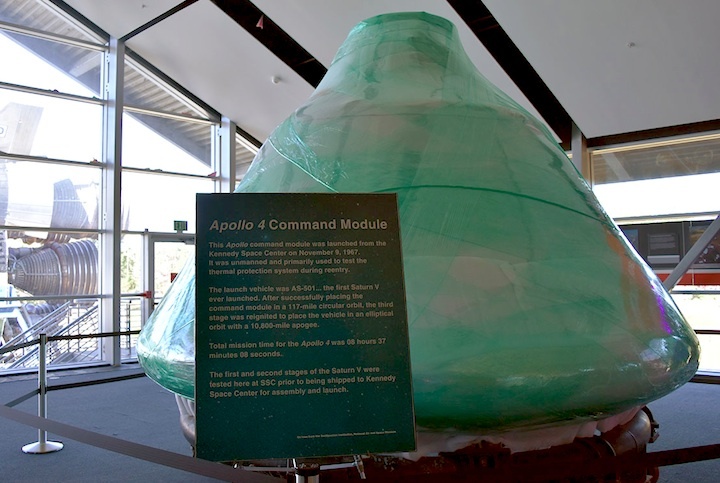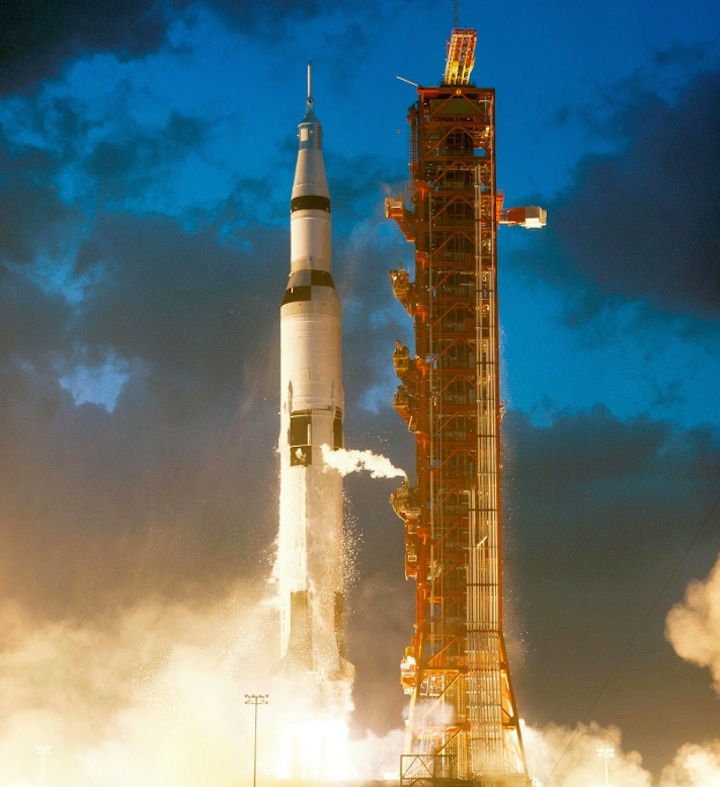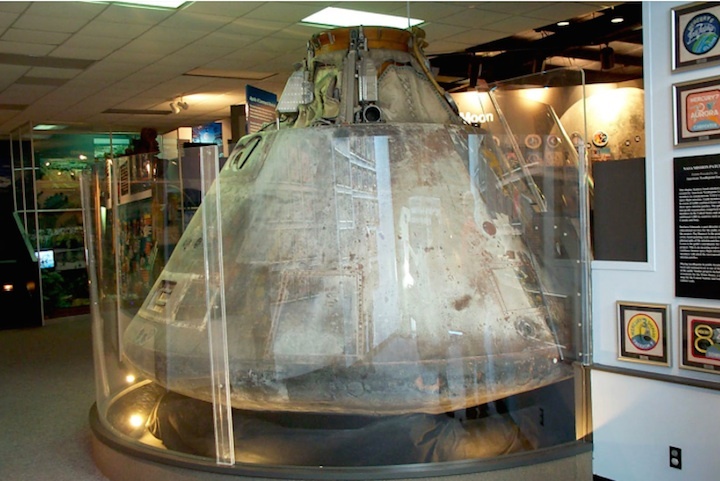1.11.2017
Apollo 4 capsule from first Saturn V launch lands at Infinity Science Center

The first Apollo spacecraft to launch atop a Saturn V rocket has landed in a new display, just in time for its trailblazing mission's 50th anniversary.
The Apollo 4 command module, which flew on the maiden flight of NASA's towering Saturn V rocket on Nov. 9, 1967, debuted at its new permanent home at the Infinity Science Center in Mississippi on Tuesday (Oct. 31). The spacecraft was moved from NASA's nearby Stennis Space Center on Sunday (Oct. 29) to join the displays at the space center's official visitor center.
"We are deeply honored to have the opportunity to display this priceless artifact of American space history," said John Wilson, executive director of the Infinity Science Center, in a statement. "By bringing the capsule to Infinity, our center is able to continue to tell the Apollo story to our 80,000 visitors each year and inspire future generations to dream big while reflecting upon the accomplishments of our past."
The Apollo 4 spacecraft is now exhibited in Infinity's Space Gallery, though still under wraps. The science center plans to build a glass structure to enclose and protect the artifact and add signage for its exhibition. The capsule's display is part of a large-scale redesign dedicated to celebrating and interpreting the accomplishments of the space program, as well as the science behind space exploration.

The launch of NASA's first Saturn V rocket on the Apollo 4 mission marked the first use of Kennedy Space Center's Pad 39A in Florida on Nov. 9, 1967. (NASA)
|
The Apollo 4 mission, also known as AS-501, was an "all-
The sheer power of the Apollo 4 launch caught spectators by surprise, rattling the viewing stands at the press site 3.5 miles (5.6 kilometers) away.
"Oh, it's terrific, the building is shaking!" exclaimed Walter Cronkite, describing the launch from CBS's mobile studio, where they had to hold a large picture window from being blown in by the Saturn V's shockwave. "Look at that rocket go into the clouds at 3,000 feet! Oh the roar is terrific!"
The Apollo 4 module — flying without a crew — soared to 11,234 miles (18,079 km) above the planet on its third orbit of Earth. The eight-hour, 36-minute and 59-second mission ended with the spacecraft re-entering Earth's atmosphere at almost 25,000 miles per hour (40,1000 k/ph), simulating a return from the moon, and splashing down northwest of Midway Island in the northern Pacific Ocean, where it was recovered by the USS Bennington.
The command module, a modified Block 1 spacecraft with the serial number 017, was equipped with a 70mm camera that captured imagery of Earth rotating below. The capsule also tested a heat shield coating, antenna designs, and a modified crew access hatch (the Apollo 4 mission was the first to fly after the loss of the Apollo 1 crew in a pad fire, in part due to the astronauts' inability to open the hatch).

The Apollo 4 command module, as previously exhibited at NASA's Stennis Space Center. (A Field Guide to American Spacecraft)
|
NASA transferred the Apollo 4 capsule to the Smithsonian in January 1969. It was subsequently loaned back to the space agency for display at Stennis Space Center, where it was put on view until early 2012. It did not immediately move to the Infinity Science Center that same year due to the new visitor center not having doors large enough to fit the 36.2-foot-tall by 12.8-foot-wide (11 by 3.9 m) artifact.
The command module entered the center on Sunday via a larger set of doors leading into a 3D immersive theater and educational area under construction. The Infinity partnered with Mammoet, a logistics company, to move the capsule.
The Apollo 4 command module joins another large Apollo-
Quelle: CS
